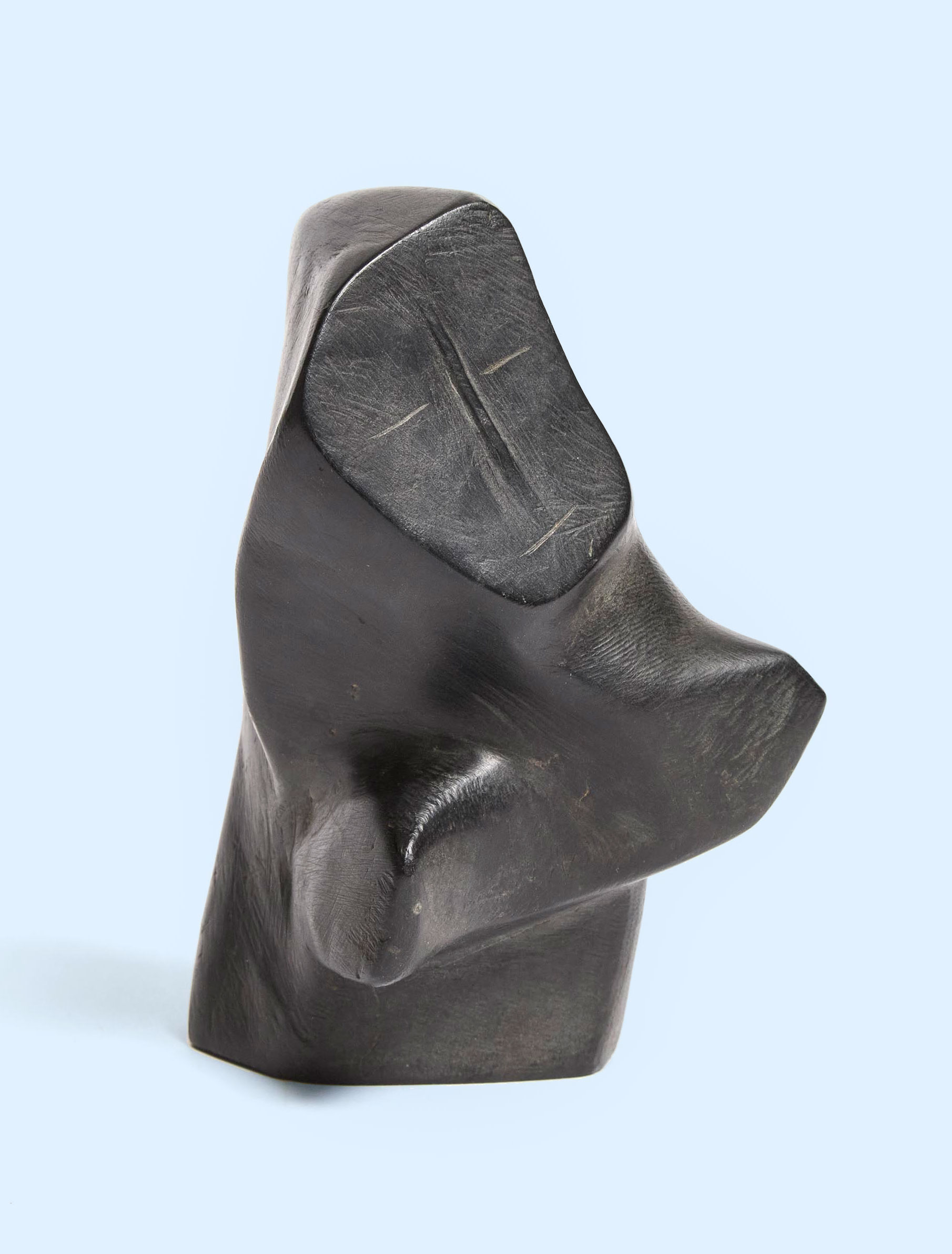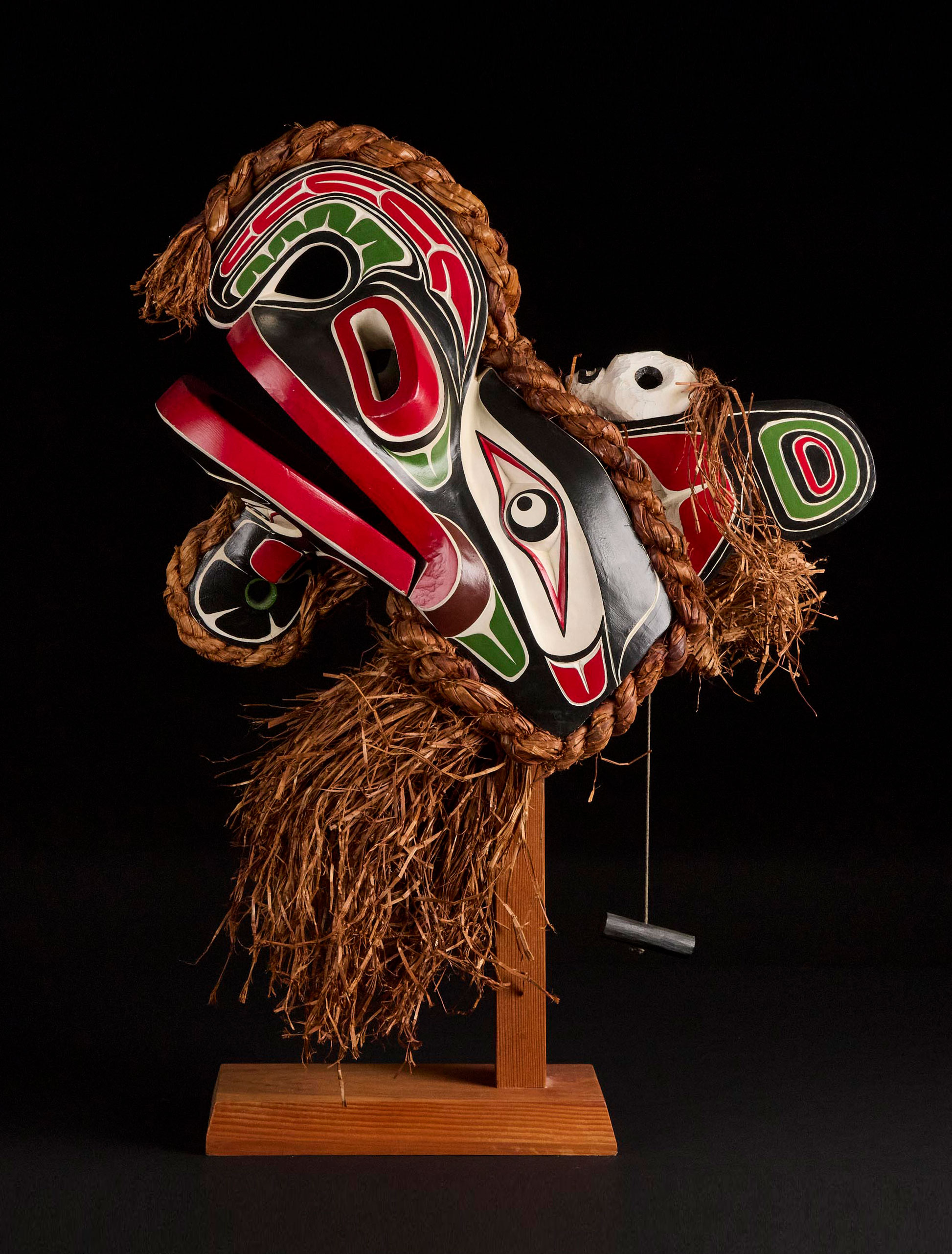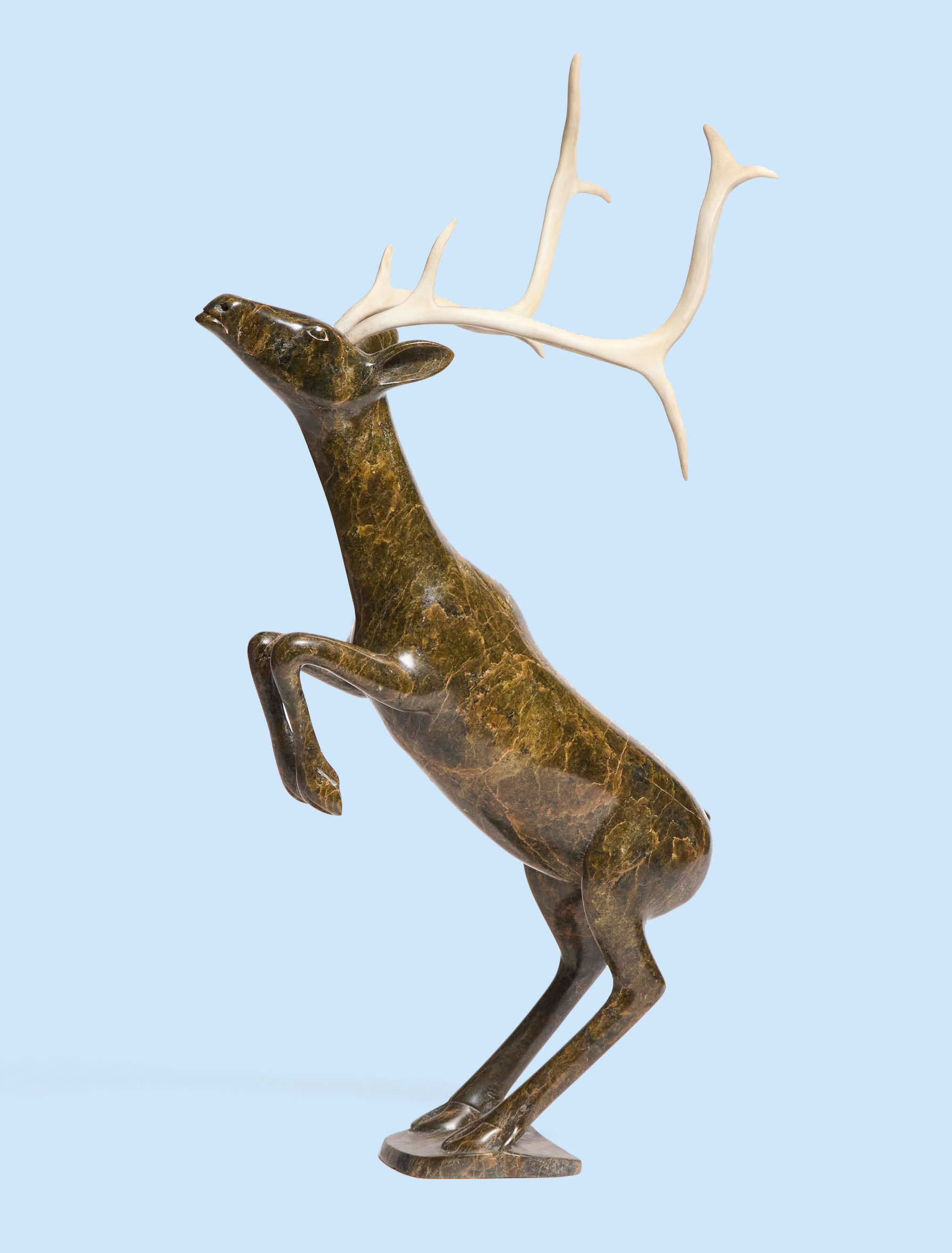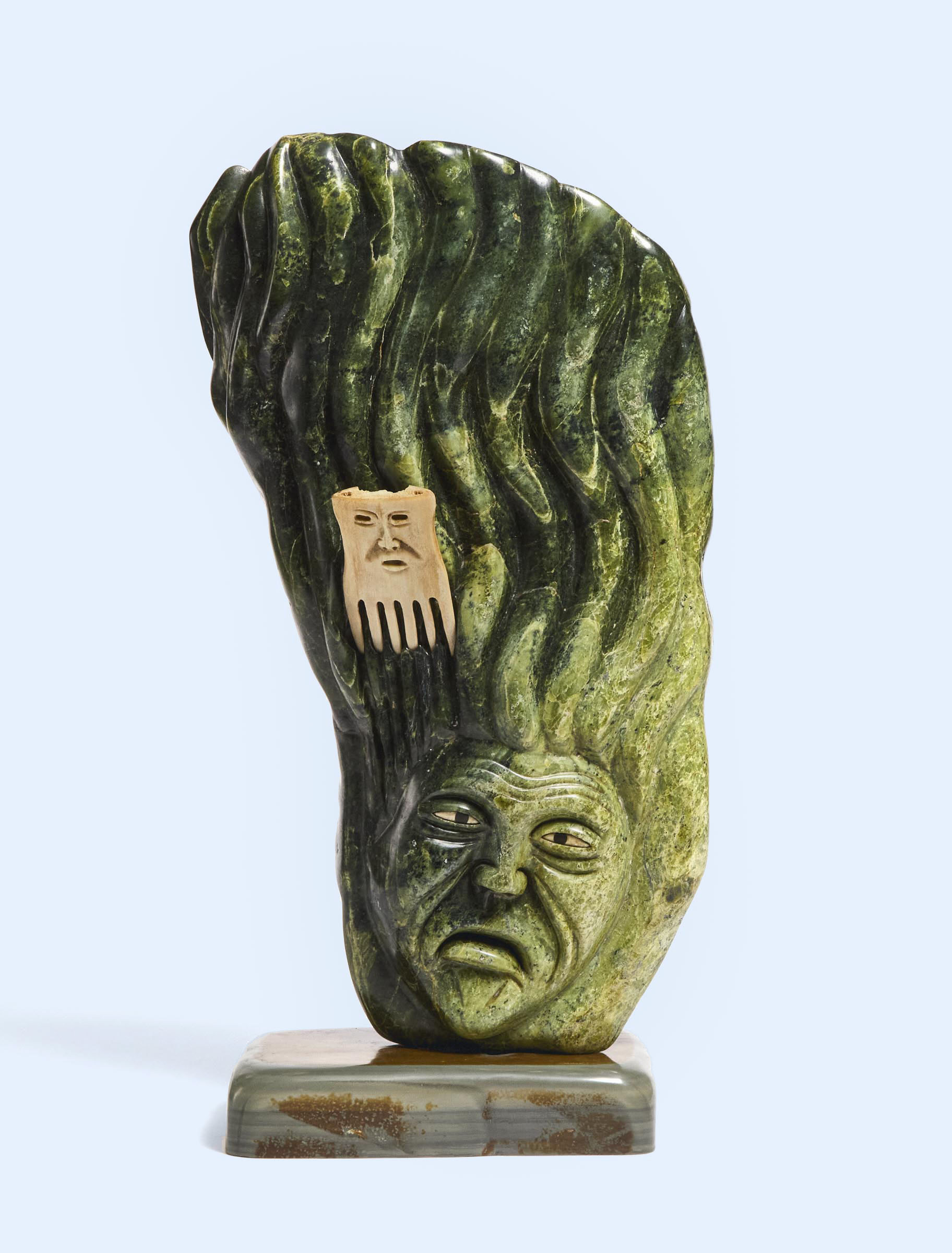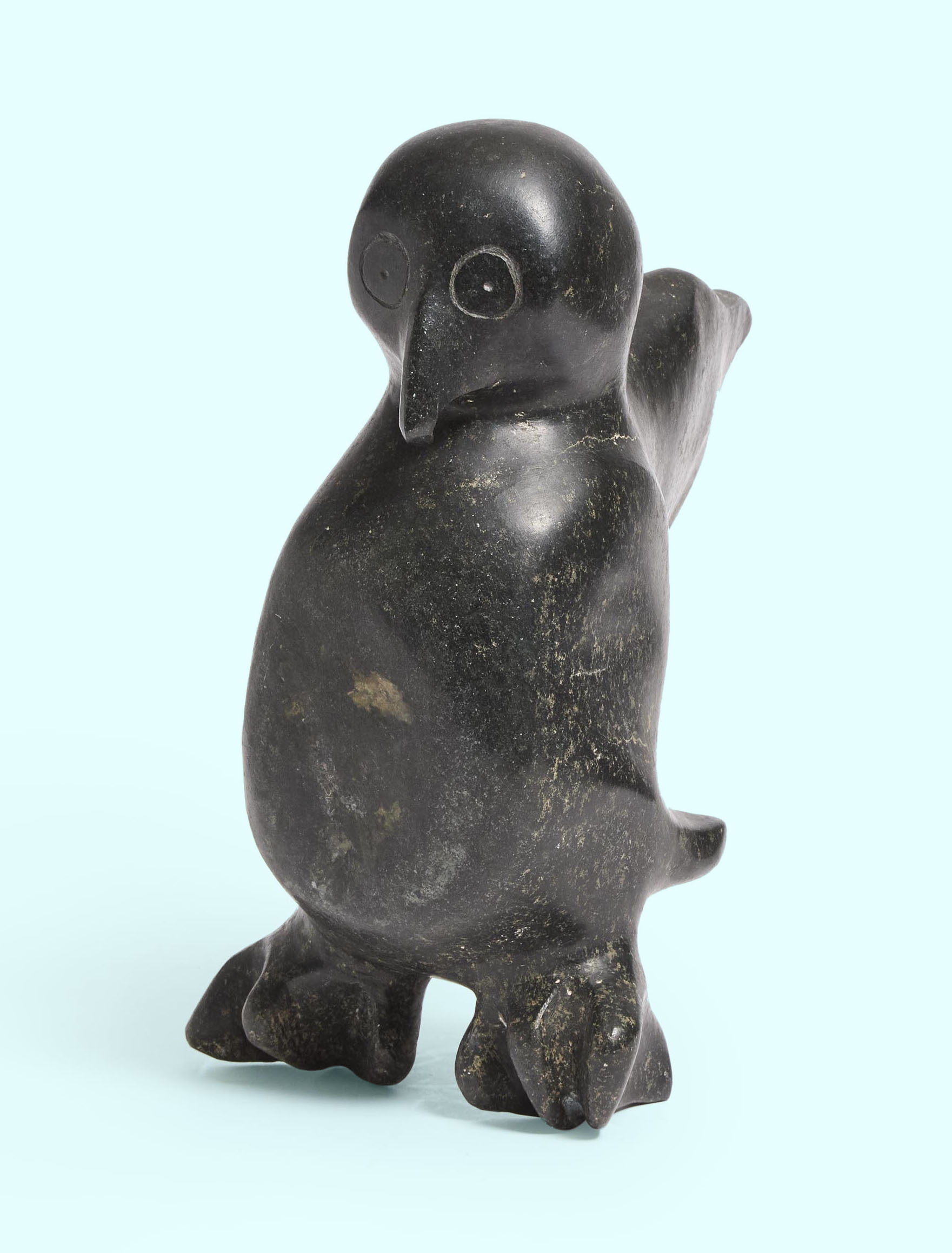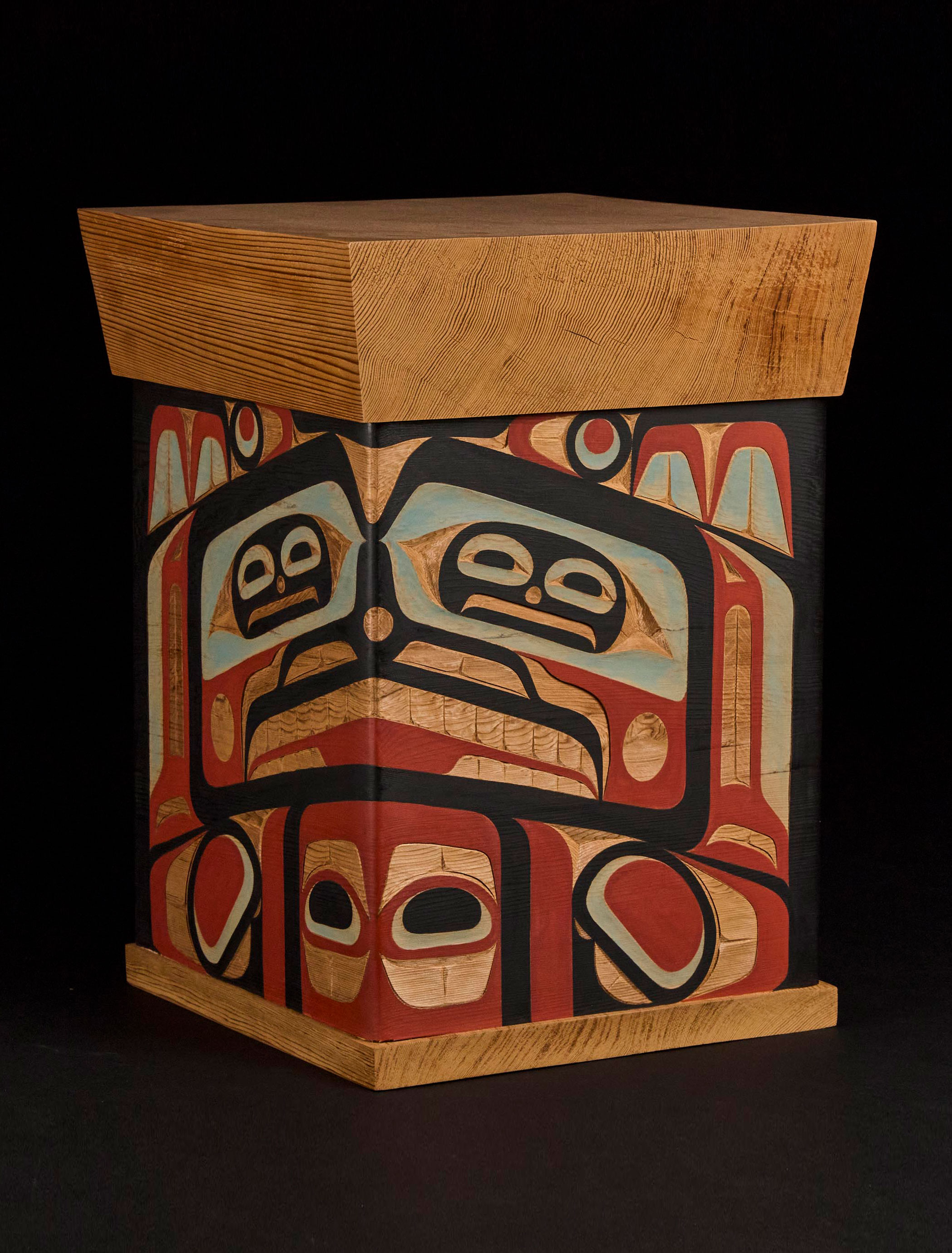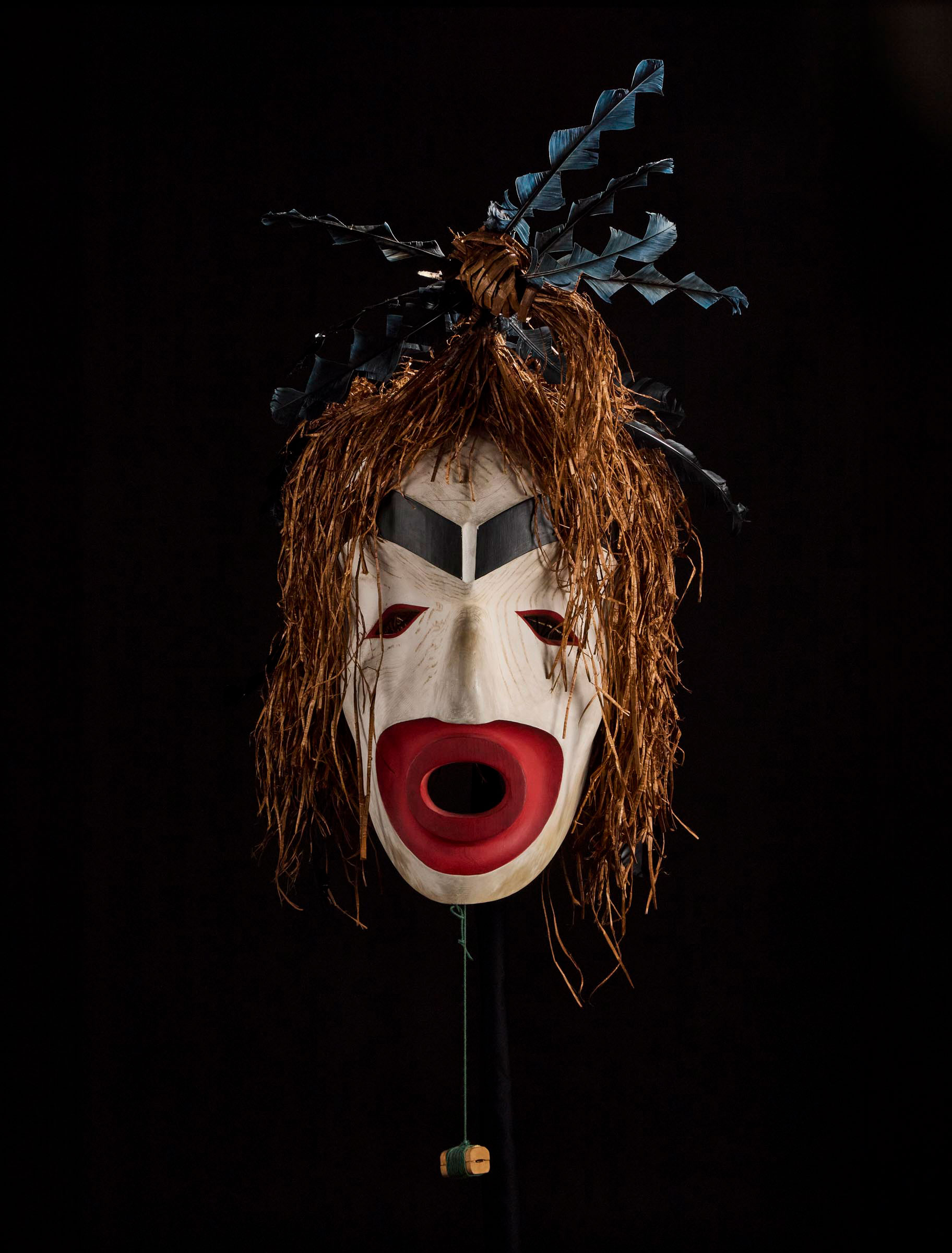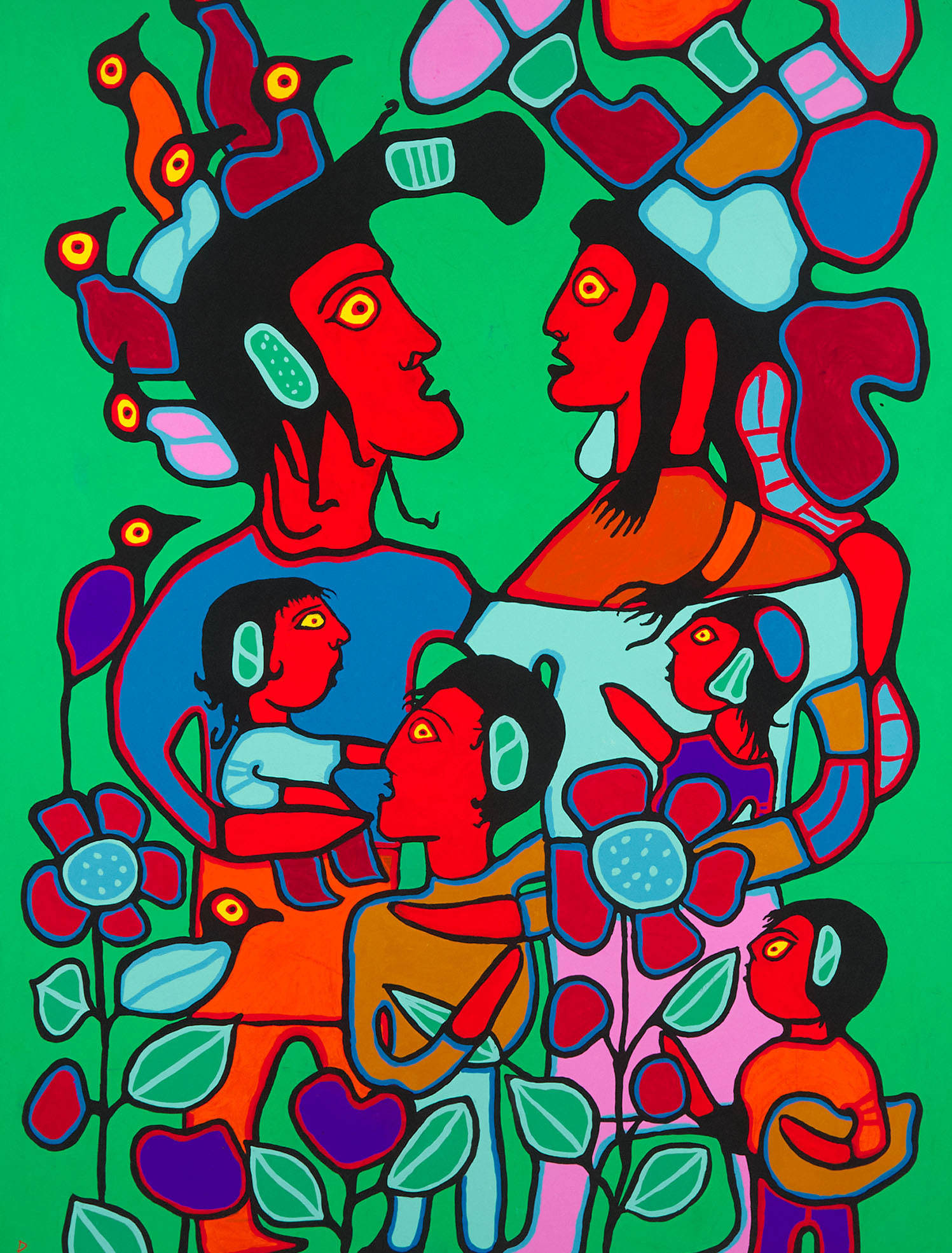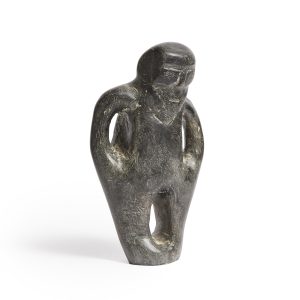
“We do not own these sculptures as much as we act as their custodians,” says Duncan McLean, Waddington’s president and senior specialist of Inuit Art. When assembling our major spring auction of Inuit and First Nations Art, it became apparent to McLean and Palmer Jarvis, senior specialist, that several of the pieces had originally been sold by Waddington’s decades earlier and were now returning to our auction block. Some of the sculptures had been abroad, while others stayed closer to home. Several had been outside of Canada for over 45 years, and have now returned to the nation they were created in, ready to enter the collections of a new generation of buyers who will take their own turn at caring for these masterworks.
McLean, who has been involved in Waddington’s Inuit auctions since the landmark 1978 sale of the William Eccles Collection, sees the return of some of these sculptures as akin to renewing an acquaintance with an old friend. When the Eccles auction took place, collectors of Inuit art were few and far between, a small group of dedicated insiders. Since then, Waddington’s has offered thousands of works, set record prices, and expanded the market well beyond Canada’s borders, helping to establish Inuit art as an integral part of the nation’s creative output. Today, the audience for such works is broad and increasingly more international – no longer can these sculptures be considered an insider’s secret.
COLLECTING WITH CARE
Several of the sculptures in the spring 2024 auction come to us from an important private collection in Charlottesville, Virginia. The pieces were carefully chosen, bought from sources including Waddington’s over a period of 19 years, primarily from 1979-1998, and have been held in the same collection ever since. Jarvis says of the collection, “the breadth and quality of works chosen is really quite notable. In a period when international interest in Inuit art was in its early stages, they put together a collection, not just of works by important artists, but also really superlative and interesting examples.” Among them is lot 158, John Tiktak’s Man with Hands in Pockets, circa 1970. This expressive figure exhibits one of the artist’s most recognizable stylistic devices: the arms defined in loops of stone, separated from the torso by oval-shaped excavated areas. The subject’s compressed eyes and slight smile is almost evocative of the peaceful faces of Tiktak’s Arviat contemporary John Pangnark.
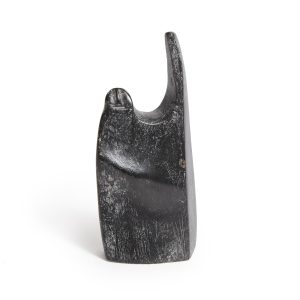
Pangnark is represented in this selection by lot 135, the 1968 Waving Figure. The sculpture is one of a small number of early Pangnark figures collected by former Arviat Crafts Officer Dennis Webster, and first consigned to Waddington’s in 1995. Notably, Pangnarks consigned to Waddington’s by Webster in 1995 are characterised by their early, almost experimental forms. (1) Webster was an important figure in the history of Arviat sculpture. Arriving in Arviat as Crafts Officer in 1966, he encouraged many of the early artists to pursue carving. In the 1993 Government of Canada catalogue, Pelts to Stone, artists Lucy Tasseor Tutsweetok, and Mary Ayaq Anowtalik identified Webster as the first person to encourage them and others in Arviat to begin sculpting. (2)
Lot 214 is a transformation scene by Johnny Kakutuk. In 1967, an art competition was sponsored in Puvirnituq (Povungnituk) by Dr. Nelson H. H. Graburn as part of his research on contemporary artists and art activities. The idea was for local carvers to sculpt pieces of originality, thought and imagination, independent of potential commercial influences. The competition was judged by Graburn and Pat Furneaux, a Northern Affairs administrator in Puvirnituq. Entries were later organised by George Swinton into a travelling exhibition, the second instalment in a series of influential travelling collections of Inuit art, the first of which was a solo exhibit dedicated to the sculpture of John Tiktak. Lot 214 was one of a total of 80 works of sculpture and graphics exhibited from entries in the 1967 competition, and originated from Furneaux’s collection before being sold to the Charlottesville buyer. (3)
Also included in this American selection is lot 102, Woman with Kakiniit (Tattoos), the work of an unidentified early Inukjuak (Port Harrison) sculptor. The work was collected by artist Harold Pfeiffer, and was previously offered at Waddington’s in 1998 as part of Pfeiffer’s estate. Pfeiffer studied at the Ecole des Beaux-Arts in Quebec City from 1925-27 before travelling to London and Paris in the early 1930s to further his artistic development at notable galleries including the British Museum, The Victoria and Albert, the Tate Gallery and the Louvre. (4)
During the early 1950s, Pfeiffer’s friends James and Alma Houston suggested that he join the federal department of Northern Affairs to work with tuberculosis patients in hospitals and rehabilitation centres in the Arctic. There Pfeiffer would work with many of the important artists who were treated at the hospital, most notably Kenojuak Ashevak. Over his lifetime, Pfeiffer sculpted many portraits of Inuit sitters with whom he was well acquainted. Some of Pfeiffer’s most exceptional portraits were of fellow artists.
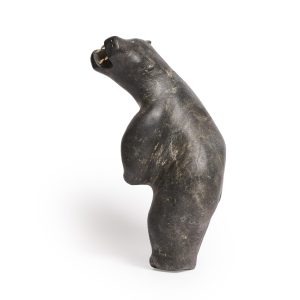
WORKS FROM THE 1994 BAYLY ART MUSEUM EXHIBITION, UNIVERSITY OF VIRGINIA
Several of the sculptures in our spring auction, also from the same notable private collection as the four aforementioned lots, were items that Waddington’s was asked to advise on, but were not consigned for auction. McLean was involved in appraising a group of Inuit works for an exhibition, Inuit Art from the Canadian Arctic, at the Bayly Art Museum at the University of Virginia, Charlottesville, in 1994. It goes without saying that works of this quality would have been readily accepted for one of our auctions, but at the time, they were not for sale. Thirty years later, McLean is delighted to see ten of the sculptures included in the important exhibit again.
Lot 156 is Pauta Saila’s Rearing Bear, circa 1965. Though made when the artist was nearly 50, this sculpture marks an early iteration of Pauta’s signature bears. Brooding and raw, squarely planted on two legs, this bear stands in contrast with later Dancing Bears, which can be more winsome than fierce. Similarly, it is less studied than later examples, and shows the artist’s earliest thoughts about the subject. As is the case with many of Pauta’s bears, the sculpture is gracefully balanced and harmonious in composition, expressing its own unique personality and verve. This bear is also notable for its large size and excellent provenance, documented and dated by The Snow Goose Gallery, Ottawa. The stone used by Pauta reinforces its age, indicative of the period in which it was made. As Inuit artists typically use materials that can be found locally, regions can be distinguished by their distinctive stone or stones, sometimes even down to a particular quarry or vein. Once a particular vein of stone has been exhausted, another must be found, meaning that certain shades and variations of stone truly encapsulate a time and place.
Lot 190 is Thomas Ugiuk’s Men Hauling, circa 1971. Ugiuk was the son of the renowned Kangiqliniq (Rankin Inlet) artist John Kavik. The monumentality of Kavik’s style can be seen in Ugjuk’s blocky and muscular compositions, but so can a stilled movement and sense of tension that is unique to the sculpture of the son. Ugjuk worked for over ten years in the hard and sometimes dangerous environment of the nickel mine at Kangiqliniq before it closed in 1962. (5) He was never a prolific sculptor, but his small and important oeuvre is characterised by depictions of figures grouped together, often labouring in a seemingly shared task. This large and uncommon example of Ugjuk’s early work was collected in Kangiqliniq in 1974 by collector and staunch supporter of Inuit art Peter Millard, who is perhaps best known to enthusiasts of Kangiqliniq art for his writing in Inuit Art Quarterly. (6) A closely related sculpture to Men Hauling can be found prominently on one of the opening pages of George Swinton’s Sculpture of the Eskimo, dated to 1970.
FULL CIRCLE – BACK TO WADDINGTON’S
The final two artworks we would like to bring to your attention were key lots in Waddington’s auctions in 1978 and 1995 respectively. Again, a standout of our May auction is lot 136, Karoo Ashevak’s 1972 Spirit. With their ingenuity and unique vision, Karoo’s sculptures continue to intrigue generation after generation of collectors with their mix of imagination and humour – and we look forward to shepherding this work into the next generation’s collection.
Karoo’s preferred medium was whalebone due to the wonderfully abstract and curvilinear shapes of the bones in their unaltered state. These forms lent themselves to Karoo’s visions of the spirit world. Per Pamela Harris, “his approach to his work is unlike that of most Eskimo carvers, who believe that the form of the finished carving already exists within any piece of stone or bone and who consider that the carver’s work is to free that form from the material that has kept it confined. Ashevak always begins his carvings with an idea in mind and then choses material of appropriate sizes and shapes. It is with the grotesque and wonderful pieces of whalebone that his genius has exploded.” (7) He worked the whalebone using simple tools: a carpenter’s saw, files, and a drill. Karoo especially loved working with a drill, and would use it to hollow out nostrils in many of his most signature creations.
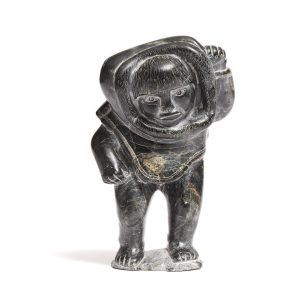
1972 was a pivotal year in Karoo’s short career, a year which included his first solo show in Toronto in March, as well as a great burst of creativity on the artistic front. This Spirit, in contrast with other sculptures, is serene, its face sweetly upturned to the sky with an enigmatic Mona Lisa-esque smile. It is an elegant form, pared down to its essence. Though Karoo was noted for his enjoyment of introducing “moving parts” in his work, this sculpture is concise and unto itself.
Karoo’s sculptures, though they can often be variations on a theme or an idea he was working out, are always unique. Jean Blodgett writes that “Each sculpture is an integral unit representing a particular being, without reference to specific myths, stories or daily events…The images in Ashevak’s sculpture originate in the general culture and tradition of the Eskimo, but the works are not so specific in reference as to be bound by this ethnic origin…The cultural heritage and consequent meaning strengthen and enrich the images but do not restrict them – the work can speak to those who have no knowledge of the Eskimo or his culture.” (8) Though distinctly Karoo, his figures are never repeated, making this Spirit a work not to be missed.
Truly bringing this whole story full circle is lot 199, Davidialuk Alasua Amittu’s Undressing (Story of Nulayuviniq), circa 1959. This sculpture was part of Waddington’s first blockbuster auction of Inuit art, the William Eccles Collection in 1978. We are delighted to have it return to us once again.
For many, Davidialuk is the preeminent Inuit storyteller in image and word. The fatal and the tragic, the mythical and the commonplace are recorded in his iconic images. Undressing tells the story of Nulayuviniq, or The One Who Suddenly Grew Big. As it is told, members of a migrating community return to their previous camp to retrieve a mother and children left behind. Upon arrival, they find the group has gone save for one of the children, who has apparently transformed into a giant, her mother’s amauti now dwarfed by the child’s new size, clings around her neck. The rescuers run away striking their whips at the giant, who despite her huge size cries in the voice of a baby. Slowly the rescuers are able to gain distance between themselves and the outsized infant, as they do, she becomes a small dot in the distance and is transformed into a rock island. (9)
We hope that these eight lots inspire you to take a closer look at our major auction of Inuit and First Nations Art. We have enjoyed working with our clients to bring it together. A sincere thank you to our consignors from around the world, and a big hello to our bidders – we look forward to connecting with you this season and onwards into 2024.
ABOUT THE AUCTION
Held online from May 24-29, 2024, Waddington’s is pleased to present our major spring auction of exceptional Inuit & First Nations Art. Important artworks this season include works of sculpture and graphics by Karoo Ashevak, Jessie Oonark, Kiakshuk, John Pangnark, Pauta Saila, Aisa Qupirualu Alasua, Parr, Osuitok Ipeelee, Kiugak Ashoona, Joe Talirunili, John Kavik, Kenojuak Ashevak, Johnny Inukpuk, Thomas Ugjuk, Ennutsiak, Davidialuk Alasua Amittu, Beau Dick, Charlie James, David Ruben Piqtoukun, Abraham Apakark Anghik, Manasie Akpaliapik, Judas Ullulaq, Barnabus Arnasungaaq, and John Tiktak.
Previews will be available at our Toronto gallery, located at 275 King Street East, Second Floor, Toronto:
Thursday, May 23 from 10 am to 5 pm
Friday, May 24 from 10 am to 5 pm
Saturday, May 25 from 12 pm to 4 pm
Sunday, May 26 from 12 pm to 4 pm
Monday, May 27 from 10 am to 5 pm
Tuesday, May 28 from 10 am to 5 pm
Or by appointment.
Please contact us for more information.
(1) Waddington’s Auctioneers, Important Sale by Auction, Fall 1995 (Toronto: Waddington McLean & Company Ltd., 1995), 55, 62, lots 1042, 1049.
(2) Mark Kalluak, Pelts to Stone: A History of Arts and Crafts Production in Arviat (Ottawa: Indian and Northern Affairs Canada, 1993), 31, 36.
(3) Waddington’s Auctioneers, An Important Sale of Inuit Art (Toronto: Francis Graphics, 1979), 7; George Swinton, Eskimo Fantastic Art (Winnipeg: Hignell Printing, 1972).
(4) John A. Stevens and Harold Pfeiffer, The Man Who Makes Heads with His Hands: The Art and Life of Harold Pfeiffer, Sculptor (Ontario: General Store Publishing House, 1997), 11, 17.
(5) Maija M. Lutz, Hunters, Carvers, and Collectors: The Chauncey C. Nash Collection of Inuit Art (Cambridge, MA: Harvard University Press, 2012), 102.
(6) Neale, Stacey. “The Rankin Inlet Ceramics Project: A Study in Development and Influence.” The National Library of Canada. March, 1997, 152. https://www.collectionscanada.gc.ca/obj/s4/f2/dsk3/ftp04/mq26025.pdf
(7) Pamela Harris, Karoo Ashevak Spirits (New York: American Indian Arts Center, 1973), unpaged.
(8) Jean Blodgett, Karoo Ashevak: Winnipeg Art Gallery, March 30 to June 5, 1977 (Winnipeg: The Winnipeg Art Gallery, 1977), unpaged.
(9) Zebedee Nungak and Eugene Arima, Eskimo Stories Unikkaatuat (Ottawa: National Museum of Canada, 1969), 32-33, pl. 18.
Related News
Meet the Specialists

Palmer Jarvis
Senior Specialist

Elizabeth Gagnon
Consignment Coordinator
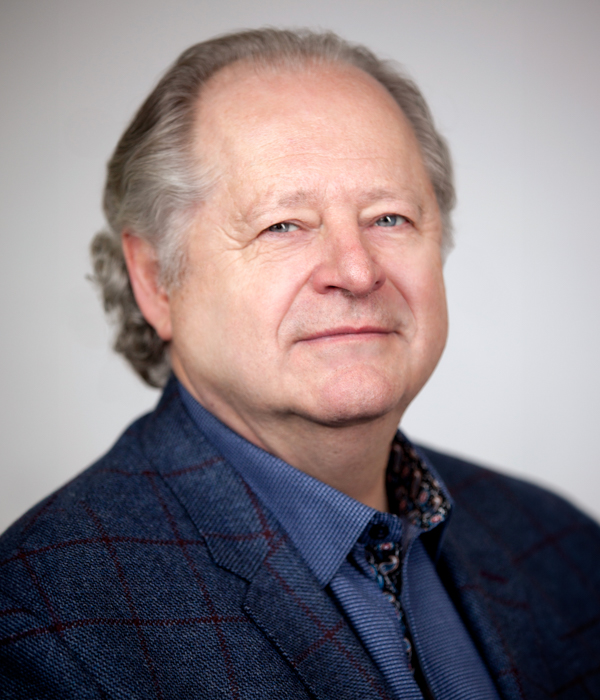
Duncan McLean
President, Senior Specialist



